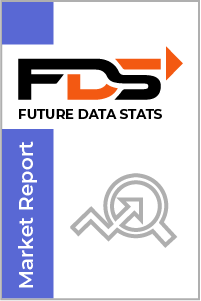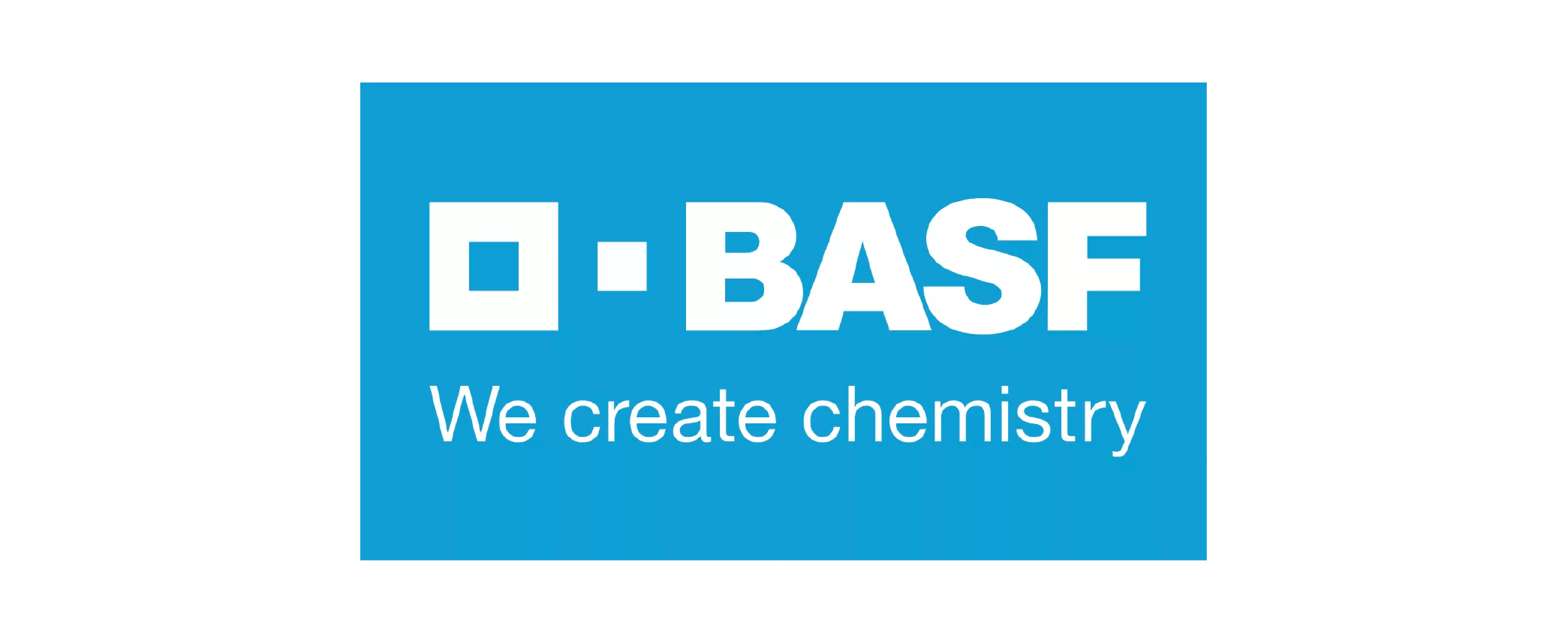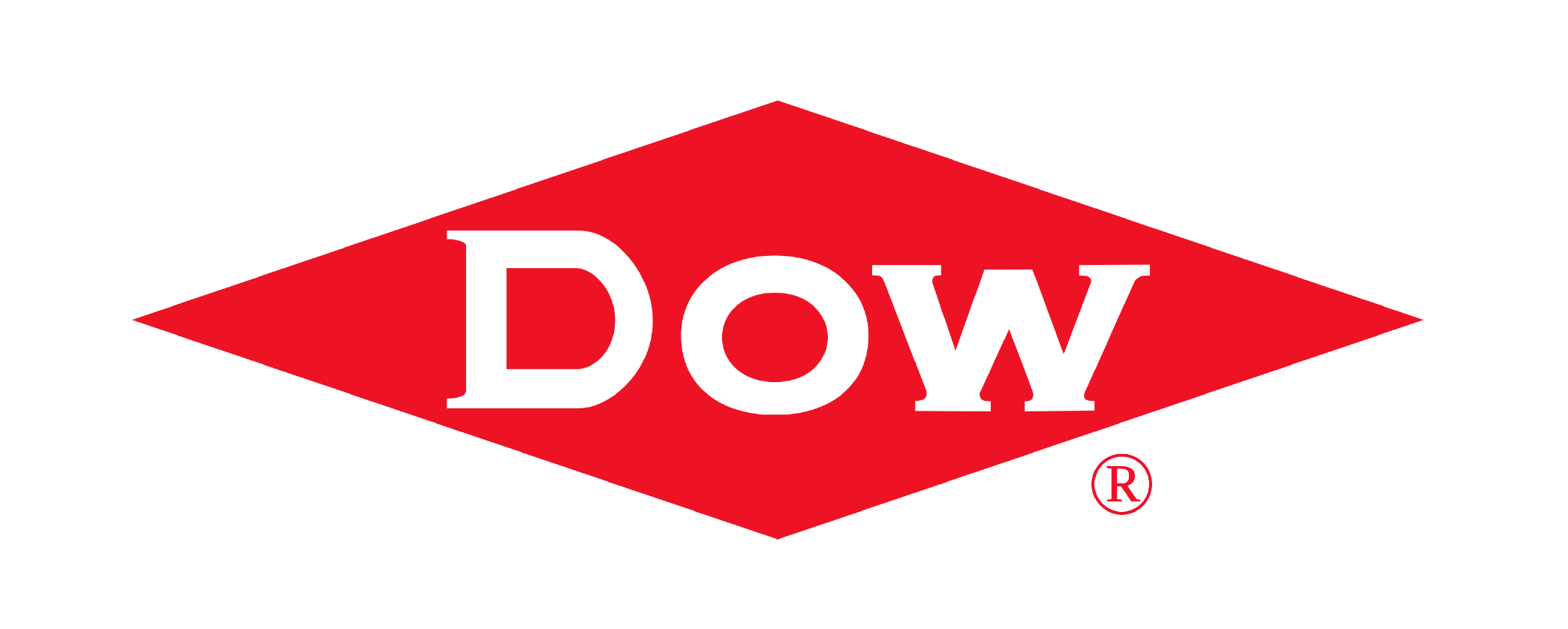The global Enterprise Automation Market size was valued at USD 75 Billion in 2024 and is projected to expand at a compound annual growth rate (CAGR) of 16.5% during the forecast period, reaching a value of USD 250 Billion by 2032.
The "Enterprise Automation Market Research Report" by Future Data Stats provides an in-depth examination of the market landscape, utilizing historical data from 2021 to 2023 to identify key trends and growth patterns. Setting 2024 as the foundational year, the report explores consumer behavior, competitive forces, and regulatory frameworks that influence the industry. It transcends basic analysis, delivering a thoroughly researched forecast extending from 2025 to 2033. By employing sophisticated data analysis methodologies, the report not only outlines the market's growth trajectory but also uncovers emerging opportunities and foresees potential obstacles, empowering stakeholders with vital insights to adeptly navigate the changing market landscape.
MARKET OVERVIEW:
Enterprise automation refers to the use of technology to streamline and optimize business processes across departments such as finance, HR, customer service, and IT. It enables organizations to reduce manual tasks, increase operational speed, and improve accuracy by using tools like workflow automation, robotic process automation (RPA), and artificial intelligence. For the market, enterprise automation offers a pathway to scale operations efficiently while staying competitive in rapidly changing environments. Companies invest in automation to cut costs, boost productivity, and gain real-time insights, making it a strategic focus for digital transformation across industries.
MARKET DYNAMICS:
Enterprise automation is evolving rapidly, with current trends focused on integrating artificial intelligence and machine learning into core business operations. Companies increasingly adopt intelligent automation to enhance decision-making, personalize customer experiences, and manage large data volumes with greater accuracy. The shift toward cloud-native automation platforms also reflects the demand for scalable, remote-friendly solutions that support hybrid work environments. Looking ahead, the market shows strong potential in areas like hyperautomation, predictive analytics, and industry-specific automation frameworks. Businesses are preparing to automate more complex workflows that require contextual understanding and real-time responsiveness. As more organizations aim to become fully digital, the scope for automation will expand across emerging sectors, including healthcare, education, and logistics, creating new opportunities for solution providers and technology innovators.
Organizations are actively seeking solutions that streamline processes, reduce operational costs, and enhance overall performance. With advancements in artificial intelligence and machine learning, companies can automate repetitive tasks, allowing their workforce to focus on higher-value activities. This shift not only boosts efficiency but also fosters innovation, enabling businesses to adapt quickly to changing market conditions. However, the market faces certain restraints that can hinder growth. Concerns about data security and the complexity of integrating automation technologies into existing systems often pose challenges for organizations. Additionally, the initial investment required for automation tools can be substantial, deterring smaller businesses from adopting these solutions. Despite these obstacles, opportunities abound as companies increasingly recognize the long-term benefits of automation. By investing in the right technologies, organizations can transform their operations, gain a competitive edge, and position themselves for future success.
ENTERPRISE AUTOMATION MARKET SEGMENTATION ANALYSIS
BY TYPE:
Robotic Process Automation (RPA) continues to lead this segment, largely due to its ability to streamline repetitive tasks and cut operational costs. Organizations across industries deploy RPA to enhance accuracy in tasks like data entry and invoice processing. The appeal lies in RPA’s minimal disruption to existing systems, enabling rapid deployment without massive infrastructure changes. Intelligent Process Automation (IPA) is gaining fast traction as firms seek more adaptive and cognitive solutions. IPA combines machine learning and artificial intelligence to manage complex workflows that go beyond routine operations. Businesses value its potential to analyze unstructured data and make informed decisions, especially in customer support and fraud detection scenarios.
Business Process Management (BPM), Workflow Automation, and Decision Management are becoming essential as firms pursue end-to-end process optimization. BPM helps map and monitor entire processes for ongoing improvement, while Workflow Automation ensures task coordination across departments. Decision Management tools support consistent, rule-based decision-making, particularly in compliance-heavy sectors like finance and healthcare.
BY DEPLOYMENT MODE:
On-premise deployment remains relevant among organizations with stringent data privacy requirements or heavy legacy systems. Enterprises in sectors like banking and government often choose on-premise solutions for greater control over internal operations and regulatory compliance. These setups also appeal to companies operating in regions with limited cloud infrastructure. Cloud-based deployment, however, dominates due to its flexibility, lower upfront costs, and ease of scaling. Businesses of all sizes opt for cloud solutions to reduce hardware dependence and support hybrid work environments. Cloud automation platforms allow real-time updates and integrations, which are critical for dynamic business needs.
The shift toward Software-as-a-Service (SaaS) models further accelerates cloud adoption in the enterprise automation space. Cloud-based automation tools can be rapidly deployed across geographies, enabling consistent workflows and faster digital transformation. This model supports frequent upgrades and minimal downtime, making it a strategic choice for growth-oriented organizations.
By Enterprise Size:
Small and Medium Enterprises (SMEs) are rapidly embracing automation to stay competitive and streamline limited resources. Cloud automation and low-code platforms make it easier for smaller businesses to implement solutions without heavy investment or IT staff. These tools support faster onboarding, simplified operations, and increased productivity. Large enterprises lead in terms of automation spend and complexity of deployment. With broader operational scope, these companies integrate automation across multiple departments and geographies. They also experiment with advanced technologies like AI-driven analytics and custom workflow orchestration, pushing the frontier of enterprise automation.
Scalability remains a key consideration across both enterprise sizes. While SMEs prioritize agility and quick ROI, large enterprises focus on compliance, security, and integration with complex legacy ecosystems. Vendors increasingly tailor solutions to match the varied needs of both segments, enabling broader market reach.
BY FUNCTION:
Human Resources (HR) departments benefit from automation in recruitment, onboarding, and payroll. Automating these repetitive tasks frees HR staff to focus on employee engagement and strategic planning. Tools that support digital document management and self-service portals have become standard in many HR systems. Finance and Accounting functions rely heavily on automation for real-time reporting, reconciliation, and compliance tasks. Enterprises use automation to reduce human error, manage large transaction volumes, and comply with evolving financial regulations. Automated invoice processing and budgeting tools are now critical components of financial operations.
Sales and Marketing, Customer Service, Supply Chain, and IT Operations also see transformative gains from automation. CRM integrations help marketing teams automate lead nurturing, while customer service bots reduce wait times. In supply chains, automation improves demand planning and logistics tracking. Meanwhile, IT departments use automation to monitor systems, resolve tickets, and ensure uptime.
BY INDUSTRY VERTICAL:
The Banking, Financial Services, and Insurance (BFSI) sector leads automation adoption due to its focus on efficiency, accuracy, and compliance. Automated fraud detection, claims processing, and customer onboarding are just a few examples where automation delivers clear ROI. This sector continues to push for innovation to enhance customer experience. Healthcare organizations turn to automation to handle administrative workflows, patient scheduling, and claims processing. With growing patient volumes and rising operational costs, hospitals and clinics increasingly automate repetitive processes to allocate more time for patient care. Compliance with health data regulations further drives investment in secure automation tools.
Retail, Manufacturing, IT, and other sectors see unique benefits. E-commerce platforms automate order processing and customer service for faster turnaround. Manufacturers deploy automation for quality control and inventory management. Telecommunications use it for service delivery and troubleshooting, while governments adopt it for digitizing public services. Each vertical tailors automation to its specific pain points and operational goals.
BY GEOGRAPHY:
In North America, enterprises continue to invest heavily in intelligent automation and cloud-first strategies. The U.S. leads with strong adoption in BFSI, healthcare, and retail sectors, driven by digital maturity and early tech adoption. Regulatory clarity and access to skilled labor also support a strong enterprise automation ecosystem. Europe sees growing interest in process automation across regulated sectors like finance and healthcare. GDPR compliance encourages the use of automated tools for data governance and workflow transparency. Germany, the UK, and the Nordics show particular momentum in integrating automation with broader digital transformation efforts. Asia Pacific experiences rapid growth fueled by industrial automation and digital government initiatives. Countries like China, India, and Japan invest in smart manufacturing and automated public services. The presence of a strong tech startup ecosystem further supports experimentation with AI and automation in new business models.
Latin America is seeing rising automation adoption among mid-sized companies seeking operational efficiency. Countries like Brazil and Mexico prioritize customer-facing automation in retail and financial services. Limited access to legacy infrastructure creates opportunities for leapfrogging to cloud-native automation platforms.
Middle East and Africa show steady growth as governments push digital initiatives and private sectors seek better resource utilization. In the Gulf region, energy firms invest in operational automation to enhance safety and productivity. Public service digitalization also plays a major role in the region's automation journey.
REGIONAL ANALYSIS:
In North America, the enterprise automation market sees strong momentum driven by early technology adoption, mature IT infrastructure, and a high demand for efficiency across industries. The United States leads the region with widespread implementation of automation in sectors like finance, healthcare, and retail. Companies prioritize intelligent process automation and cloud-based solutions to handle growing operational complexity and hybrid work models. Canada also shows increasing investment in automation, particularly among mid-sized businesses modernizing their core systems.
Europe and Asia Pacific follow closely, each with unique growth drivers. In Europe, data privacy regulations and the focus on digital governance fuel automation adoption, especially in Germany, the UK, and France. Enterprises seek secure, compliant tools to manage workflows and reporting. Meanwhile, Asia Pacific experiences rapid growth, led by China, India, and Japan. These countries invest heavily in smart manufacturing, digital public services, and scalable automation platforms to support fast-growing economies. In Latin America, rising adoption stems from retail, banking, and logistics sectors in Brazil and Mexico. Middle East and Africa see growing government-led digital transformation efforts, with automation gaining ground in energy, transport, and public services.
MERGERS & ACQUISITIONS:
- In January 2024: IBM acquired StreamSets and webMethods from Software AG to enhance its AI and automation portfolio.
- In February 2024: UiPath announced a strategic partnership with SAP to integrate AI-powered automation solutions.
- In March 2024: Microsoft acquired Inflection AI to strengthen its enterprise automation and AI capabilities.
- In April 2024: ServiceNow acquired UltimateSuite to expand its workflow automation offerings.
- In May 2024: Oracle merged with Cerner to boost its healthcare automation solutions.
- In June 2024: Automation Anywhere partnered with Google Cloud to deliver AI-driven RPA solutions.
- In July 2024: Siemens acquired Brightly Software to enhance its industrial automation and IoT solutions.
- In August 2024: Salesforce merged with MuleSoft to improve API-led automation integrations.
- In September 2024: Pegasystems acquired Everflow to expand its process automation tools.
- In October 2024: Honeywell acquired SCADAfence to strengthen its cybersecurity automation in industrial systems.
- In November 2024: Cisco acquired Isovalent to boost cloud-native networking automation.
- In December 2024: Workday announced a partnership with OpenAI to integrate generative AI into its HR automation platform.
KEY MARKET PLAYERS:
- UiPath
- Automation Anywhere
- Blue Prism (now part of SS&C)
- Microsoft (Power Automate)
- IBM (Robotic Process Automation)
- SAP (Process Automation)
- Oracle (Automation Suite)
- ServiceNow (Workflow Automation)
- Pegasystems
- Appian
- Kofax
- Nintex
- WorkFusion
- SS&C Technologies
- Softomotive (acquired by Microsoft)
- NICE
- Kryon
- EdgeVerve (Infosys)
- Siemens (Industrial Automation)
- Honeywell (Process Automation)
Enterprise Automation Market Table of Contents
Executive Summary
Market Introduction
- Market Dynamics
- Market Drivers
- Market Restraints
- Market Opportunities
- Market Challenges
Enterprise Automation Market Analysis
- Market Overview
- Market Trends
- Value Chain Analysis
- Ecosystem Analysis
Segmentation Analysis
- By Type
- By Deployment Mode
- By Enterprise Size
- By Function
- By Industry Vertical
Regional Outlook
- North America
- Europe
- Asia Pacific
- Latin America
- Middle East and Africa
Competitive Landscape
Market Share Analysis
Company Profiles
Strategic Developments
Mergers and Acquisitions
Partnerships and Collaborations
Product Launches
Future Outlook and Forecast
Conclusion
Appendix
- Research Methodology
- Data Sources
- Glossary of Terms
Enterprise Automation Market Segmentation
By Type:
- Robotic Process Automation (RPA)
- Intelligent Process Automation (IPA)
- Business Process Management (BPM)
- Workflow Automation
- Decision Management
By Deployment Mode:
- On-Premise
- Cloud
By Enterprise Size:
- Small and Medium Enterprises (SMEs)
- Large Enterprises
By Function:
- Human Resources (HR)
- Finance and Accounting
- Sales and Marketing
- Supply Chain and Logistics
- Customer Service
- IT Operations
By Industry Vertical:
- Banking, Financial Services, and Insurance (BFSI)
- Healthcare
- Retail and E-commerce
- Manufacturing
- Telecommunications and IT
- Government and Public Sector
- Energy and Utilities
- Transportation and Logistics
- Education
By Geography:
- North America (USA, Canada, Mexico)
- Europe (UK, Germany, France, Italy, Spain, Rest of Europe)
- Asia-Pacific (China, Japan, Australia, South Korea, India, Rest of Asia-Pacific)
- South America (Brazil, Argentina, Rest of South America)
- Middle East and Africa (GCC Countries, South Africa, Rest of MEA)
WHY SHOULD YOU INVEST IN A MARKET RESEARCH REPORT?
Smarter Business Decisions:
A high-quality market research report delivers valuable insights into industry trends, customer preferences, and competitor strategies. With solid data guiding your choices, you can minimize risks and confidently pursue new opportunities—whether launching a product or expanding into new markets.
Spot Hidden Opportunities:
Market research uncovers unmet customer needs and emerging trends before they become mainstream. By aligning your products or services with these opportunities, you can stay ahead of the competition and capture untapped demand.
Know Your Competition Inside Out:
Gain a clear picture of your competitors' strengths, weaknesses, and strategies. This knowledge helps you refine your unique selling points, craft stronger positioning, and outmaneuver rivals effectively.
Sharper, More Effective Marketing:
Understanding your audience is key to successful marketing. Market research reveals who your customers are, what drives their decisions, and how they engage with brands. With these insights, you can create tailored campaigns that deliver better results and higher ROI.
Reduce Risks Before They Arise:
Every business move carries some risk—but research helps you anticipate challenges before they become costly. By analyzing market conditions and potential obstacles, you can make proactive adjustments to protect your bottom line and reputation.
Strengthen Your Case for Funding:
Investors and lenders want proof of market potential before backing a business. A well-researched report provides the data-driven evidence they need, boosting your credibility and increasing your chances of securing capital.
Stay Ahead of Industry Shifts:
Markets evolve fast, with new technologies, regulations, and consumer behaviors constantly reshaping the landscape. Regular market research ensures you stay informed, adapt quickly, and maintain a competitive edge in your industry.
RESEARCH METHODOLOGY AT FUTURE DATA STATS
At Future Data Stats, we combine decades of industry expertise with cutting-edge research techniques to deliver unparalleled market intelligence. Our team of seasoned analysts employs a dynamic, data-driven approach to uncover actionable insights, helping businesses navigate complex market landscapes with confidence.
Comprehensive & Cutting-Edge Market Analysis
We go beyond surface-level trends to provide a 360-degree view of market dynamics. Our research methodology is designed to:
✔ Accurately assess market size, growth patterns, and competitive landscapes.
✔ Identify emerging opportunities through real-time trend analysis and predictive modeling.
✔ Validate findings with high-quality data, expert consultations, and independent verification.
Our insights empower decision-makers with strategic clarity, ensuring they stay ahead in rapidly evolving industries.
Multi-Source Data Collection & Validation
We leverage a diverse mix of primary and secondary research sources, including:
- In-depth stakeholder interviews (industry leaders, suppliers, distributors, and end-users)
- Statistical databases & market reports from authoritative global sources
- Regional market intelligence to capture localized trends and demand shifts
- Proprietary analytical models tailored to specific industry needs
- By cross-verifying data from multiple streams, we ensure maximum accuracy and reliability.
Key Advantages of Our Research Approach
- Actionable Intelligence – Clear, data-backed recommendations for strategic planning.
- Technology-Enhanced Accuracy – Advanced tools for data validation and trend forecasting.
- Unbiased Insights – Independent analysis free from external influence.
Our Two-Tier Research Framework
- Primary Research – Direct Industry Engagement
- Expert Interviews: Over 25+ hours of discussions with key stakeholders across the value chain.
- Targeted Surveys: Structured questionnaires for KOLs (Key Opinion Leaders) to gauge market sentiment.
- Competitive Benchmarking: Assessing leading players to determine market positioning.
- Secondary Research – Extensive Data Synthesis
- Analysis of 3,000+ documents, including industry reports, whitepapers, and regulatory publications.
- Global & regional data mining from government databases, trade journals, and financial reports.
- Macroeconomic & sector-specific trend mapping for long-term forecasting.
Dual Analytical Approach
We employ both top-down and bottom-up methodologies to ensure precision:
- Bottom-Up Analysis: Calculating market size from granular data, ensuring detailed accuracy.
- Top-Down Assessment: Validating findings through macroeconomic indicators and industry benchmarks.
Why Choose Future Data Stats?
✔ 70+ years of collective expertise in market intelligence.
✔ Customized research models for sector-specific accuracy.
✔ Transparent, reliable, and forward-thinking insights.
With Future Data Stats, you don’t just get data—you get a strategic advantage. Partner with us to unlock the full potential of your market decisions.
Enterprise Automation Market Dynamic Factors
Drivers:
- Businesses adopt automation to reduce costs and improve accuracy
- Companies accelerate digital transformation to boost efficiency
- Rising demand for real-time analytics drives adoption
Restraints:
- High setup and integration costs slow adoption for smaller firms
- Legacy systems limit automation compatibility
- Data security concerns challenge wider implementation
Opportunities:
- AI-powered tools offer smarter workflow optimization
- Cloud-based automation enables flexible deployment
- Emerging markets show strong demand for enterprise tech
Challenges:
- Talent gaps hinder automation strategy execution
- Change resistance affects organizational transformation
- Regulatory compliance creates added complexity
Enterprise Automation Market Regional Key Trends Analysis
North America:
- Enterprises increase investments in intelligent automation
- Cloud automation platforms gain wider traction
- Automation use expands across government sectors
Europe:
- Businesses integrate automation with green IT initiatives
- Compliance automation gains attention post-GDPR
- Cross-border digital workflows become a focus
Asia Pacific:
- Rapid industrial automation supports digital growth
- Local firms adopt automation for customer engagement
- Governments push for smart manufacturing
Latin America:
- Companies automate back-office operations for scale
- Cloud-first automation sees rising adoption
- Regional startups adopt low-code automation tools
Middle East and Africa;
- Energy and utility firms invest in operational automation
- Public sector adopts automation to streamline services
- Growing digital infrastructure supports automation rollout
Frequently Asked Questions

















